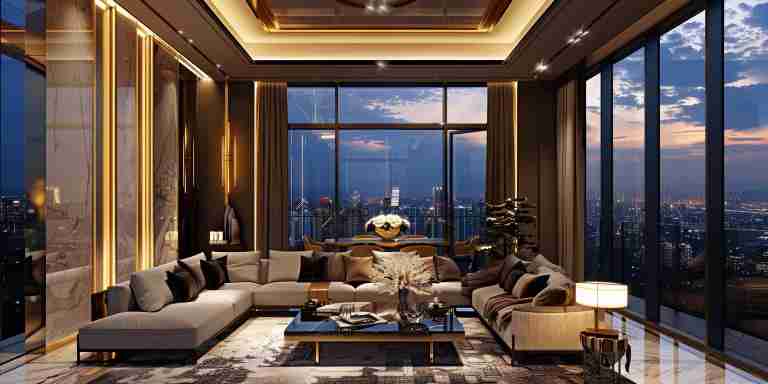Singapore’s thriving economy, political security, and exceptional living standards have made it a sought-after location for real estate investments, particularly in the form of high-rise condos. These properties offer a myriad of opportunities in the city’s real estate market, standing out for their convenience, luxurious amenities, and potential for lucrative returns. For those considering investing in a condo in Singapore, this article will delve into the advantages, factors to consider, and necessary steps to take. High-rise condo can be a lucrative investment option for both local and foreign investors in Singapore.
As humans, we have an innate connection with nature. The sights, sounds, and smells of the natural world have a profound impact on our physical and mental well-being. However, with the increasing urbanization and modernization of our cities, we have become more disconnected from nature. This has led to the rise of what is known as “nature deficit disorder,” a term coined by author Richard Louv to describe the negative impacts of our lack of exposure to nature.
Additionally, investors should be mindful of any potential changes in interest rates, as this can affect their monthly mortgage payments and overall affordability of the condo. It is crucial to carefully assess and plan for financing to ensure a successful and sustainable investment in a condo. Furthermore, investors should be diligent in conducting due diligence on the developer and project, as well as considering their own financial stability and long-term goals before committing to a mortgage. Overall, proper financing is crucial to the success of a condo investment and should be carefully considered and planned for to avoid any potential financial pitfalls. As such, investors must be diligent in their research and work closely with financial experts to make informed decisions and ensure a successful and sustainable investment. It is imperative to prioritize responsible and secure financing to safeguard the long-term success of a condo investment.
Singapore’s skyline is characterized by towering skyscrapers and up-to-date infrastructure. Condominiums, often situated in sought-after locations, offer a harmonious combination of opulence and convenience that appeals to both locals and foreigners. They boast an array of perks such as swimming pools, fitness centers, and top-notch security measures, elevating the standard of living and making them a desirable choice for potential renters and purchasers. This desirable package also translates into greater returns on investment, as rental income and property values tend to appreciate over time.
In conclusion, biophilic design has a crucial role to play in creating more livable and sustainable high-rise condos. By bringing nature indoors, it has the potential to enhance mental wellness, improve air quality, and boost productivity for residents. As we continue to urbanize and adapt to city living, it is imperative that we do not lose our connection to nature. Biophilic design offers a way to bridge this gap and create healthier and more harmonious living spaces in the concrete jungle.
Moreover, biophilic design has the potential to improve air quality within high-rise condos. Indoor air quality is often much worse than outdoor air quality due to the lack of ventilation and the presence of pollutants from various sources. Incorporating plants into the design not only adds a natural aesthetic but also helps to filter out harmful toxins, creating a healthier living environment for residents.
Beyond the health benefits, biophilic design can also have a positive impact on productivity. Studies have shown that access to natural elements can improve cognitive function, creativity, and focus. This is especially important for those living in high-rise condos, where space can be limited and distractions can be abundant. By incorporating biophilic design principles, these spaces can become more conducive to work and productivity.
So, what exactly is biophilic design? It is a design philosophy that aims to create a connection between humans and nature through the elements and patterns found in the natural world. This can include incorporating natural materials, such as wood and stone, into buildings, as well as incorporating natural light, views of greenery, and even indoor plants.
Furthermore, biophilic design can also enhance the overall experience of living in a high-rise condo. With the incorporation of natural elements, these buildings can offer a more tranquil and serene living environment. Residents can feel a closer connection to nature, even in the midst of a bustling city, and this can have a positive impact on their overall well-being.
One of the key ways biophilic design can improve mental wellness is by reducing stress and anxiety levels. The presence of natural elements has been shown to have a calming effect on our minds, helping to lower heart rate and blood pressure. In a high-stress environment like a busy, bustling city, having access to nature in the form of green walls, indoor plants, or views of greenery can provide a much-needed respite for residents.
Implementing biophilic design in high-rise condos does not have to be a complicated or expensive process. It can be as simple as adding potted plants, incorporating natural materials into the design, or creating communal spaces with views of greenery. These small changes can make a big difference in the lives of residents, both mentally and physically.
Studies have shown that incorporating these elements into design can have a significant impact on mental health. In fact, a study by the University of Exeter found that people who had access to natural elements within their workplace reported a 15% higher level of well-being and were 6% more productive than those without such access.
Nowhere is this disconnection more evident than in high-rise condos, where residents are often surrounded by concrete and steel instead of lush greenery. However, there is a growing movement towards incorporating nature into the design of these urban dwellings. This approach, known as biophilic design, not only brings the natural world indoors but also has the potential to positively impact mental wellness and productivity.

